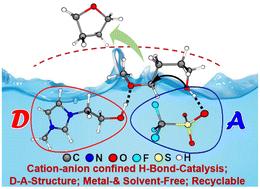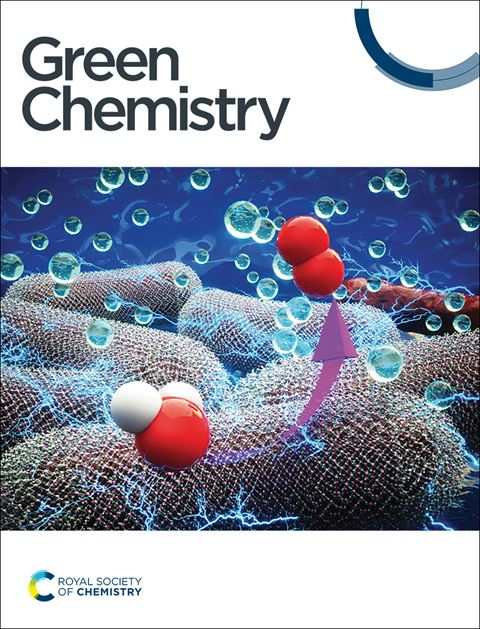无金属条件下烷氧基醇闭环C–O/O–H复分解的阳离子-阴离子受限氢键催化策略†
IF 9.2
1区 化学
Q1 CHEMISTRY, MULTIDISCIPLINARY
引用次数: 0
摘要
多键的闭环复分解(RCM)反应已经取得了相当大的进展;然而,涉及单键,特别是两个不同单键的RCM反应是罕见的,并且极具挑战性。在此,我们提出了一种阳离子-阴离子受限氢键催化策略,用于在无金属条件下催化烷氧基醇向O-杂环的闭环C–O/O–H复分解。通过理论计算,首次预测了有效的离子液体催化剂。[HO-EtMIm][OTf]显示出最高的活性,与预测结果一致。该催化剂可以提供一系列O-杂环,包括四氢呋喃、四氢吡喃、二恶烷和一些难以通过常规途径获得的复杂醚。此外,经过5次回收,它是可回收和可重复使用的,没有活性损失。综合研究表明,[HO-EtMIm]+阳离子和[OTf]-阴离子分别与烷氧基醇的醚O原子和羟基H原子在相反方向选择性地形成氢键,在阳离子-阴离子受限的离子微环境中协同催化反应。本文提出的策略提供了一种新的绿色途径来获得环醚。本文章由计算机程序翻译,如有差异,请以英文原文为准。

Cation–anion confined hydrogen-bonding catalysis strategy for ring-closing C–O/O–H metathesis of alkoxy alcohols under metal-free conditions†
Ring-closing metathesis (RCM) reactions of multiple bonds have seen considerable progress; however, RCM reactions involving single bonds, especially two different single bonds are scarce and extremely challenging. Herein, we present a cation–anion confined hydrogen bonding catalysis strategy for catalyzing the ring-closing C–O/O–H metathesis of alkoxy alcohols to O-heterocycles under metal-free conditions. Assisted with theoretical computation, the effective ionic liquid catalysts were first predicted. [HO-EtMIm][OTf] was found to display the highest activity, consistent with the predicted results. This catalyst could afford a series of O-heterocycles, including tetrahydrofurans, tetrahydropyrans, dioxanes, and some complex ethers that are difficult to access via conventional routes. Moreover, it was recyclable and reusable without activity loss after 5 recycles. Comprehensive investigations endorse that [HO-EtMIm]+ cation and [OTf]− anion selectively form hydrogen bonds with the ether O atom and hydroxyl H atom of alkoxy alcohol in opposite directions, respectively, which cooperatively catalyze the reaction in the cation–anion confined ionic microenvironment. The strategy presented here provides a novel and green route to access cyclic ethers.
求助全文
通过发布文献求助,成功后即可免费获取论文全文。
去求助
来源期刊

Green Chemistry
化学-化学综合
CiteScore
16.10
自引率
7.10%
发文量
677
审稿时长
1.4 months
期刊介绍:
Green Chemistry is a journal that provides a unique forum for the publication of innovative research on the development of alternative green and sustainable technologies. The scope of Green Chemistry is based on the definition proposed by Anastas and Warner (Green Chemistry: Theory and Practice, P T Anastas and J C Warner, Oxford University Press, Oxford, 1998), which defines green chemistry as the utilisation of a set of principles that reduces or eliminates the use or generation of hazardous substances in the design, manufacture and application of chemical products. Green Chemistry aims to reduce the environmental impact of the chemical enterprise by developing a technology base that is inherently non-toxic to living things and the environment. The journal welcomes submissions on all aspects of research relating to this endeavor and publishes original and significant cutting-edge research that is likely to be of wide general appeal. For a work to be published, it must present a significant advance in green chemistry, including a comparison with existing methods and a demonstration of advantages over those methods.
 求助内容:
求助内容: 应助结果提醒方式:
应助结果提醒方式:


